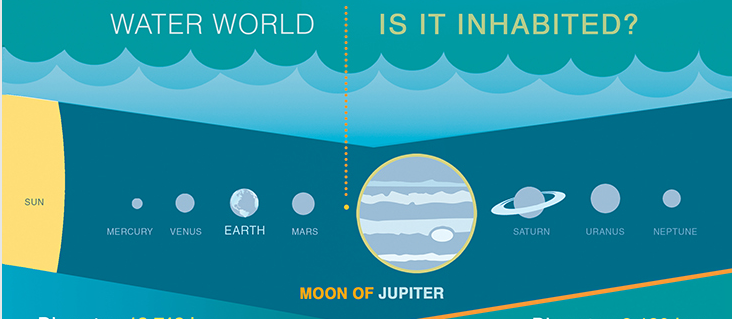NASA's 2016 budget has a significant boost for the exploration of Europa, and it's no secret why: The sixth moon of Jupiter is also considered one of the likeliest places in the Solar System (apart from Earth) to host large bodies of liquid water, and, for that reason, one of the likeliest places to find signs of extraterrestrial life. Moreover, recent evidence of tectonic activity beneath the moon's surface has increased the likelihood of underwater thermal vents (a long-held hypothesis in relation to the Europan seas), which are a haven for life in our own oceans.
But Europa remains a long way away, and the signs of life that most exobiologists hope to detect are very small. Additionally, the water oceans of Europa are thought to be locked away beneath vast planetary ice caps. The great challenge of the mission (or missions) will be to somehow penetrate the obstacle of the caps to sample the water beneath extensively enough to draw firm results.
A boon to overcoming that complication may be the discovery, made by the Hubble Space Telescope in 2012, of great plumes of vapor erupting from the caps in the Southern Polar regions of Europa. Scientists believe that these plumes are composed of water vapor. That mechanism that creates these plumes, whatever it may be, provides a ready-made sample of Europan water, delivered conveniently high into space over the planet where an intrepid satellite dispatched from Earth might intercept and collect it.
Better yet, the technique is already well understood; the Cassini mission to Saturn sampled vapor plumes erupting from the moon Enceladus and was able to determine that they were composed primarily of saltwater.
Cassini made that analysis using an instrument called the Cosmic Dust Analyzer. A mission to Europa designed specifically to detect and analyze water could be equipped with more specialized instrumentation, however.
The plume flyby may be the easiest approach to collecting water samples from Europa, but it is not the only option on the menu. According to National Geographic, NASA is also considering launching a penetrator to attempt to blow a hole through the ice and create a man-made version of the natural plumes (which would have the advantage of predictability; no one wants to launch a $255 million multi-year mission only to find that the destination vapor clouds have mysteriously dried up en route), or using landers which might, variously, either attempt to peer through the ice to search for biomarkers which would betray life below, or to melt down through the ice directly to access the ocean surface.
In any case, getting to the water is only the first step. Finding life, or signs of life, within it, may turn out to be the real challenge to the Europa mission. The types of life to attempt to detect will govern the nature of the detectors sent along on the mission, and scientists have not come to a clear consensus on what, exactly, to try to detect. There remains some possibility, or perhaps even likelihood, that Europan life (if it exists) may present signatures that are not readily identifiable to chemists steeped in the Earthly processes of life. One only need to consider the complications, and debate, over the Viking gas emission tests and potential detection of nano-bacterial structures in a Martian meteorite to understand the difficulty in uncovering incontrovertible biomarkers from extraterrestrial sources.
Nonetheless, gathering the data first is the only way to have a sensible argument over it, and the Europa mission will certainly provide much for exobiologists to debate.
Share This Article
